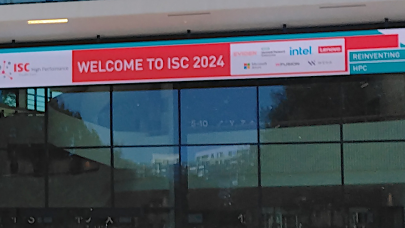WASHINGTON, D.C., June 15, 2017 – Today U.S. Secretary of Energy Rick Perry announced that six leading U.S. technology companies will receive funding from the Department of Energy’s Exascale Computing Project (ECP) as part of its new PathForward program, accelerating the research necessary to deploy the nation’s first exascale supercomputers.
The awardees will receive funding for research and development to maximize the energy efficiency and overall performance of future large-scale supercomputers, which are critical for U.S. leadership in areas such as national security, manufacturing, industrial competitiveness, and energy and earth sciences. The $258 million in funding will be allocated over a three-year contract period, with companies providing additional funding amounting to at least 40 percent of their total project cost, bringing the total investment to at least $430 million.
“Continued U.S. leadership in high performance computing is essential to our security, prosperity, and economic competitiveness as a nation,” said Secretary Perry.
“These awards will enable leading U.S. technology firms to marshal their formidable skills, expertise, and resources in the global race for the next stage in supercomputing—exascale-capable systems.”
“The PathForward program is critical to the ECP’s co-design process, which brings together expertise from diverse sources to address the four key challenges: parallelism, memory and storage, reliability and energy consumption,” ECP Director Paul Messina said. “The work funded by PathForward will include development of innovative memory architectures, higher-speed interconnects, improved reliability systems, and approaches for increasing computing power without prohibitive increases in energy demand. It is essential that private industry play a role in this work going forward: advances in computer hardware and architecture will contribute to meeting all four challenges.”
The following U.S. technology companies are the award recipients:
- Advanced Micro Devices (AMD)
- Cray Inc. (CRAY)
- Hewlett Packard Enterprise (HPE)
- International Business Machines (IBM)
- Intel Corp. (Intel)
- NVIDIA Corp. (NVIDIA)
The Department’s funding for this program is supporting R&D in three areas—hardware technology, software technology, and application development—with the intention of delivering at least one exascale-capable system by 2021.
Exascale systems will be at least 50 times faster than the nation’s most powerful computers today, and global competition for this technological dominance is fierce. While the U.S. has five of the 10 fastest computers in the world, its most powerful — the Titan system at Oak Ridge National Laboratory — ranks third behind two systems in China. However, the U.S. retains global leadership in the actual application of high performance computing to national security, industry, and science.
Additional information and attributed quotes from the vendors receiving the PathForward funding can be found here.
Source: DOE
























































